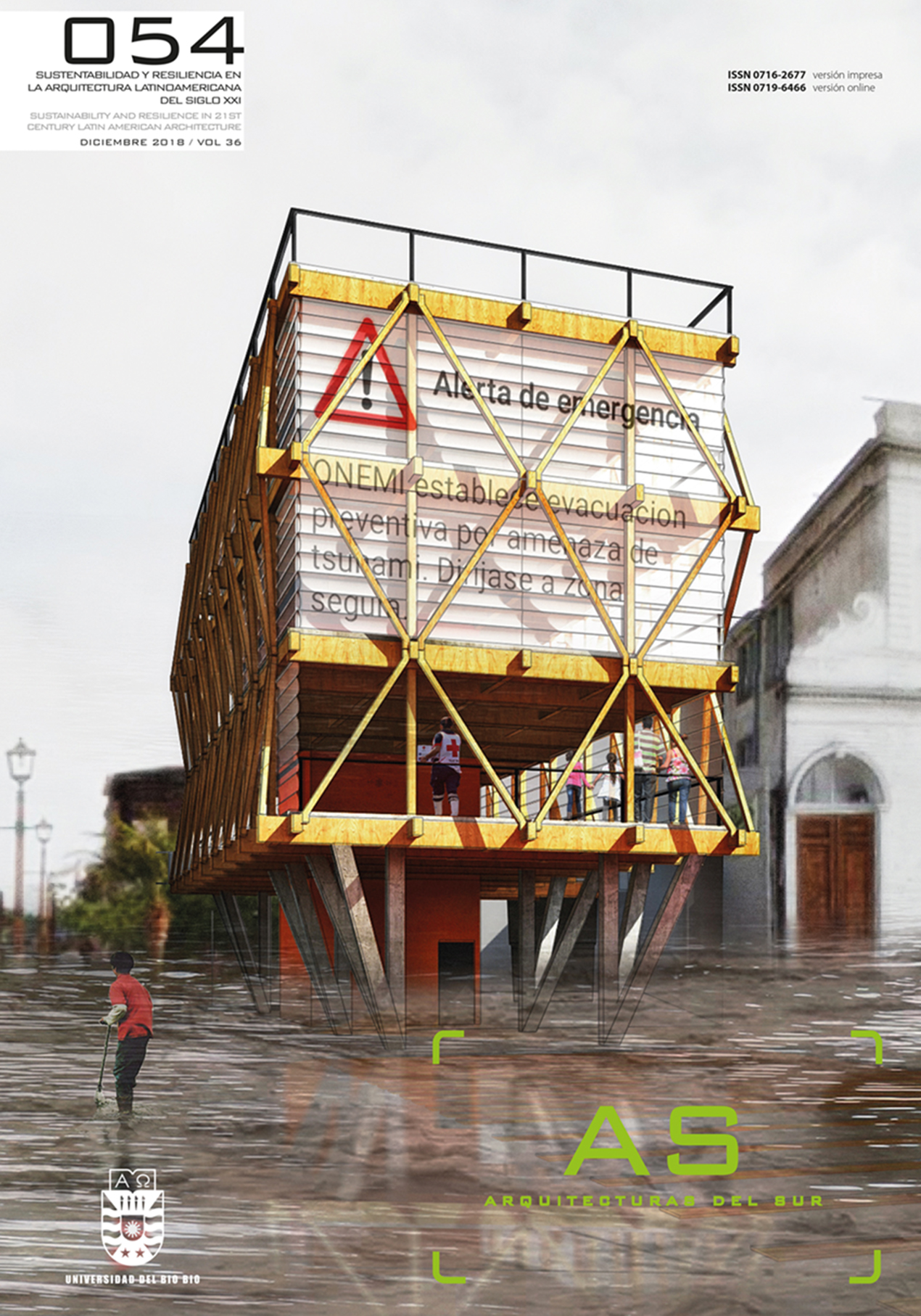The passive design of school classrooms for thermal comfort from the perspective of climate change
DOI:
https://doi.org/10.22320/07196466.2018.36.054.06Keywords:
School architecture, classrooms, climate change, environmental temperature, ChileAbstract
In Chile, the vast majority of educational buildings possess neither heating nor cooling systems that regulate temperature and thermal comfort in classrooms. Therefore, indoor temperatures can increase or decrease considerably in specific periods during the school year, thus preventing students from carrying out their academic activities in a suitable environment. For this reason, the present investigation evaluated thermal behavior and took as the unit of analysis each of the five passive design classroom prototypes from the “Energy Efficiency Guide for Educational Establishments” (Guía de Eficiencia Energética para Establecimientos Educacionales). The study demonstrated the level of thermal comfort in the classrooms in the current climate context. Additionally, comparisons were made to evaluate the vulnerability of these spaces in the face of future climate change scenarios for the years 2020, 2050 and 2080. Lastly, the classrooms with the highest number of hours of thermal comfort were selected so that these can act as models for new educational projects.
Downloads
References
ASHRAE 55‐2017 (American Society of Heating, Refrigerating and Air‐Conditioning Engineers). ANSI/ASHRAE 55‐2017: Thermal Environmental Conditions for Human Occupancy, Atlanta,2017.
BATIZ, Eduardo; GOEDERT, Jean; MORSCH, Junir Junior; KASMIRSKI, Pedro y VENSKE, Rafael. Avaliação do conforto térmico no aprendizado: estudo de caso sobre influência na atenção e memória, Produção, 2009, vol. 19, n° 3, pp. 477–488.
CITEC UBB. Guía de eficiencia Energética para Establecimientos Educacionales. 1° ed. Santiago, 2012.
DIRECCIÓN METEOROLÓGICA DE CHILE. Resumen climático Chile – 2016. Santiago, 2016.
DIRECCIÓN METEOROLÓGICA DE CHILE. Reporte anual de la evolución del clima en Chile, 2017. Santiago, 2018.
IPCC (Intergovernmental panel on climate change). Global Warming of 1.5 °C an IPCC special report on the impacts of global warming of 1.5 °C above pre-industrial levels and related global greenhouse gas emission pathways, in the context of strengthening the global response to the threat of climate change, sustainable development, and efforts to eradicate poverty. 2018.
MOLINA, C. y VEAS, L. Evaluación del confort térmico en recintos de 10 edificios públicos de Chile en invierno, Revista de la Construcción, 2012, vol.12, n° 22, pp. 27-38.
RUBIO-BELLIDO, Carlos y PÉREZ-FARGALLO, Alexis. Optimization of annual energy demand in office buildings under the influence of climate change in Chile. Energy [en línea], 2016, vol. 114, pp. 569-585. DOI: https://doi.org/10.1016/j.energy.2016.08.021
TREBILCOCK, Maureen; SOTO, Jaime; FIGUEROA, Rodrigo y PIDERIT, Beatriz. Metodología para el diseño de edificios educacionales confortables y resilientes, Revista AUS, 2016, vol. 20, pp. 70-76.
TREBILCOCK, Maureen; SOTO-MUÑOZ, Jaime; YAÑEZ, Miguel y FIGUEROA, Rodrigo. The right to comfort: A field study on adaptive thermal comfort in free-running primary schools in Chile, Building and Environment [en línea], 2017, vol. 114, pp. 455–469. DOI: https://doi.org/10.1016/j.buildenv.2016.12.036
UNEP (United Nations Environment Programme). Building Design and Construction: Forging Resource Efficiency and Sustainable Development, 2012.
Downloads
Published
How to Cite
Issue
Section
License
The content of the articles published in each issue of Arquitecturas del Sur is the sole responsibility of the authors and does not necessarily represent the opinion of University of the Bío-Bío.
The authors will maintain their copyright; however, they will guarantee the journal the right to first publication and dissemination of their work. The publication of the article in Arquitecturas del Sur will be subject to the Creative Commons International license (CC BY-SA) that allows others to adapt: remix, transform and build on the material for any purpose, even commercially; share: copy and redistribute the material in any medium or format, as long as the authorship and first publication in this journal are acknowledged by citing them correctly, and their new contributions are under a license with the same terms.














 Programa de Información Científica/Concurso Fondos de Publicación de Revistas Científicas 2018/ Proyecto Mejoramiento de Visibilidad de Revistas UBB (Código:FP180007)
Programa de Información Científica/Concurso Fondos de Publicación de Revistas Científicas 2018/ Proyecto Mejoramiento de Visibilidad de Revistas UBB (Código:FP180007) 
